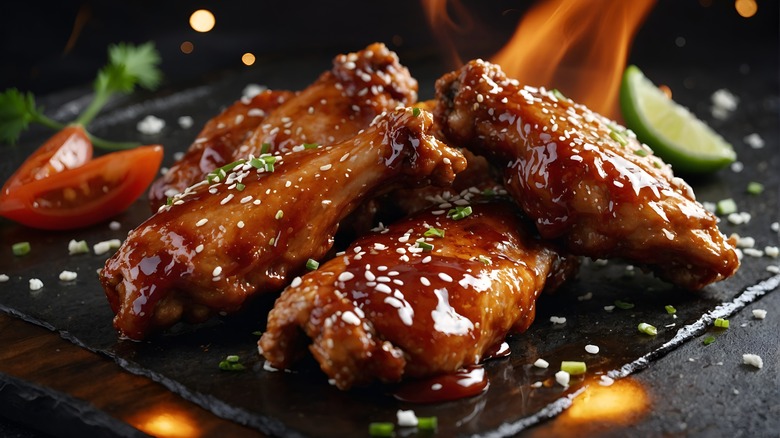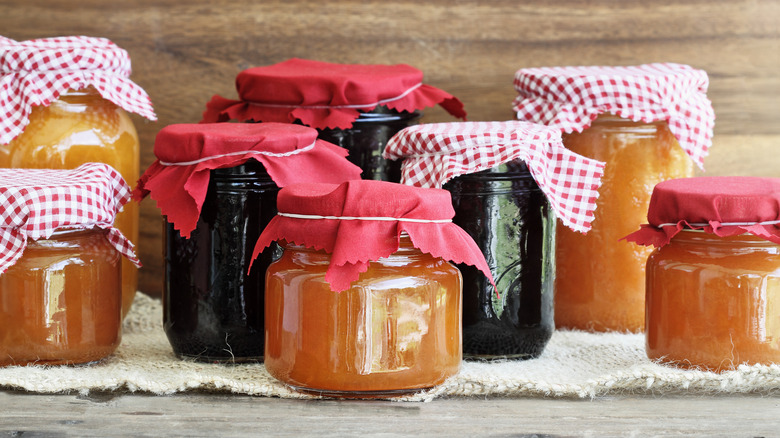One Jarred Condiment Is The Key For The Best Caramelized Chicken
If you want to execute a restaurant-quality chicken dish, a shortcut ingredient can help you get the job done easily. To level up your poultry dinner, reach for a jar of jam, jelly, preserves, or marmalade.
The fruity condiment not only infuses your dish with a sweet contrast to balance the savory chicken, but it also creates an excellent caramelized glaze that looks like it came from a professional chef. Caramelization occurs when heat breaks down sugar molecules, and these pantry staples have the sugar content and acidity to achieve exceptional caramelization and char, yielding a picture-perfect, shiny glaze. Chicken, with its neutral, mild taste, is particularly suited to experimentation with fruit products, complementing just about any flavor companions you pair with it.
When choosing between jam, jelly, preserves, or marmalade, it's helpful to understand the differences between these condiments. Jam is made from crushed or chopped fruit, and its thick, sticky texture makes it a great choice for creating a meat glaze. Jelly, on the other hand, is made solely from fruit juices, giving it a smoother, more liquid consistency. This makes jelly a good option if you prefer a glaze that is sweeter and less fruit-forward. Preserves, which contain substantial pieces of fruit, are the thickest option, and are ideal for achieving a robust fruitiness with bold chunks of fruit in a more viscous sauce. Marmalade, traditionally made from citrus fruits and often including pieces of citrus peel, is best used when you want a glaze with a bright, tangy citrus profile.
Choosing and using your fruit condiment
Virtually any fruit flavor can elevate a chicken dish. The internet is replete with recipes that incorporate everything from apricot, blueberry, and strawberry jams to plum-and-ginger preserves and orange marmalade.
Some recipes recommend generously coating your raw chicken with jam — mixed with any additional glaze ingredients — and roasting it that way. Alternatively, you can treat the fruit glaze like a barbecue sauce, adding it during the final 10 minutes of grilling or baking to prevent burning or blackening. No matter which approach you take, always remember the essential step of patting your raw chicken dry with paper towels beforehand. This ensures proper caramelization and even cooking, highlighting why paper towels are an indispensable tool whenever you cook meat.
If you're looking for flavor-pairing inspiration, consider how fruit is often paired with chicken in delicious ways. Chicken and grapes feature among the cutting board salad bar ingredients Carla Hall always keeps in her fridge. Common fruity mix-ins like red grapes, apples, and plums bring vibrant flavors to chicken salad. Hawaiian haystacks, a dish especially popular in the Rocky Mountain regions of the Western U.S., combine rice and a meaty chicken sauce with toppings like pineapple, mandarin oranges, and shredded coconut. And, of course, there's the beloved Chinese dish, orange chicken. While home cooks may not be as familiar with the idea, fruity jams and sauces on meat are also a staple in the world of competitive barbecue.


